The Woman In Black 1989 Blu-Ray version is finally here with a very welcome restoration. RICHARD PHILLIPS-JONES revisits a true classic ghost story.
Just ask anyone who was watching ITV on Christmas Eve 1989 about what they saw that night, and there’s a very good chance that they might pause for a moment, a chill running through them as they remember that moment etched in the mind of all who were watching. They won’t tell you about it, mind – they wouldn’t want to spoil it for you.
Instead they’ll tell you to seek out the television film that creeped them out over that yuletide: Nigel Kneale’s peerless adaptation of Susan Hill’s The Woman In Black.
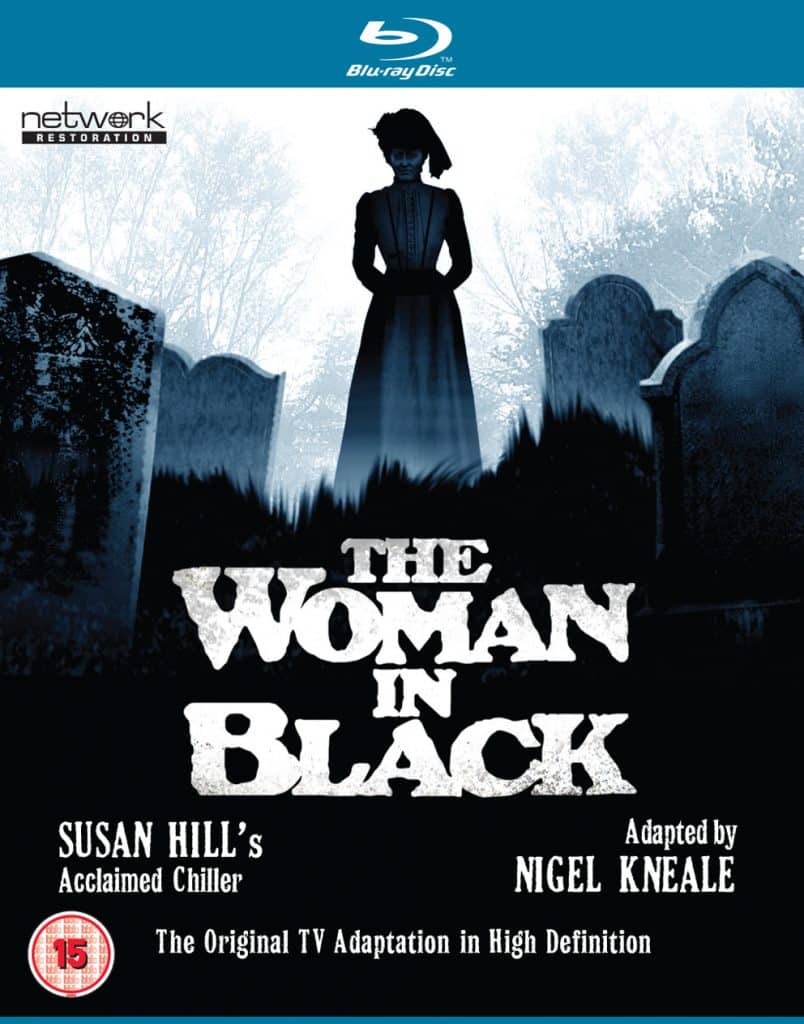
Whilst the Hammer-labelled version of 2012 was a nicely mounted and enjoyable (not to mention commercially successful) film in its own right, the version that Hammer really should have come up with, one more in keeping with the classic Brit-horror tradition had arguably already been done, by a team at Central Television who were more commonly occupied with making Inspector Morse.
After its initial transmission, The Woman In Black received only one UK repeat (Channel 4, Christmas 1994) before being consigned to the archives, save for a brief, exclusive VHS release through WH Smith. Frustratingly out of circulation for many years, rumours abounded: Some cited copyright issues, whilst others claimed that Susan Hill was blocking a release, still smarting over changes Nigel Kneale had made in his screenplay (although if that was the case, one can only imagine how Hill felt about the liberties taken in Hammer’s adaptation).
Whatever the reasons for its absence, those good people at Network seem to have overcome them. The production’s many admirers can now rejoice at this Blu-Ray release, enabling the film to be seen in far better quality than it was ever seen on TV first time around.
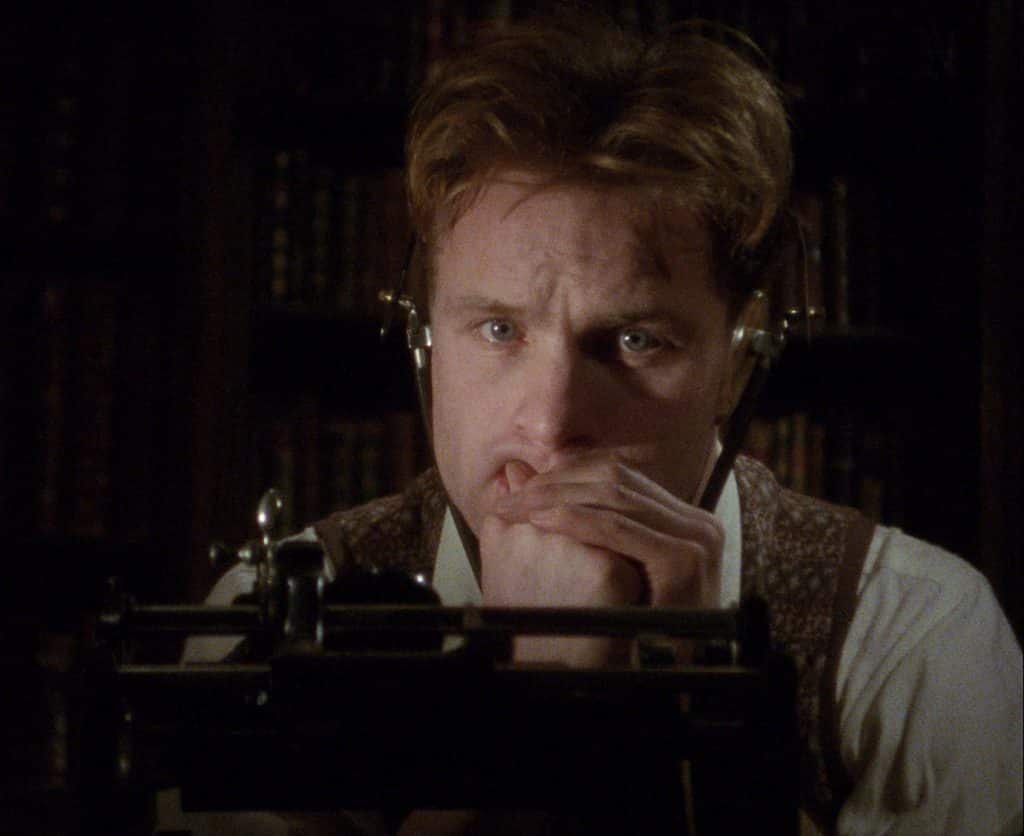
The Woman in Black 1989 Blu-Ray Review
THE FILM: Nia Jones reviewed The Woman In Black for Spooky Isles back in 2013, reflecting “I remember this being on television and being more than disturbed by it, I recall the schoolyard shrieks and chatter the next day.” A generation of Brits will likely concur.
Director Herbert Wise did not have a big horror pedigree (some episodes of Tales Of The Unexpected not withstanding), but what he did have was a delightfully eclectic background as a reliable maker of television drama, entrusted with such prestige productions as I Claudius (1976, for which he was nominated for an Emmy award) as well as one-off assignments on a wealth of popular series, across a CV that already covered 30-odd years and would continue until his retirement in 2001.
If The Woman In Black stood out a mile from the rest of the festive TV schedule that year, it wasn’t just down to its subject matter but also a matter of aesthetics: The work had more in common with Lawrence Gordon Clark’s MR James adaptations of the 1970s and a whole look and feel to television which was already an anachronism when the film hit the screens. Watching it then felt like stumbling across a great ghost story which someone had forgotten to put out in 1972, only for a programme scheduler to find it sitting on a shelf years later.
In a nutshell, The Woman In Black is one of the best films of its ilk. It may not have been intentional, but the film serves as a belated coda and requiem for an already-lost golden age of British horror.
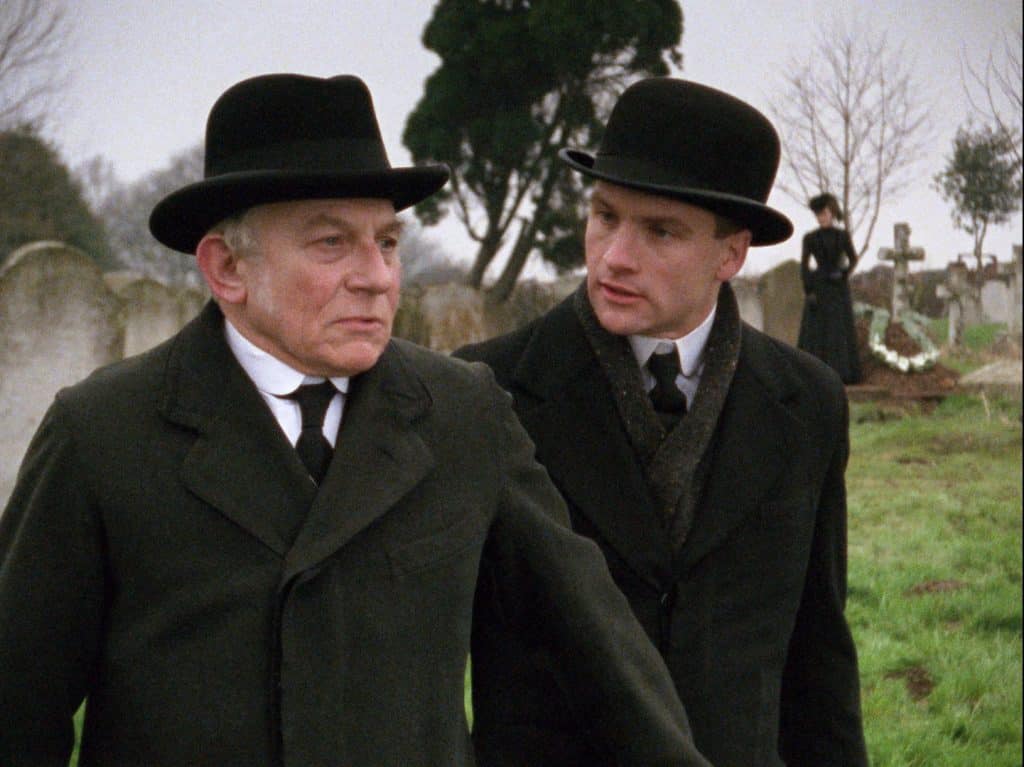
EXTRAS: There’s a commentary with Mark Gatiss, Andy Nyman and the ever-ubiquitous Kim Newman. The film was one of Nyman’s first acting jobs, and his recollections are particularly enlightening – he had the pleasure of sitting next to woman-in-black Pauline Moran at the cast and crew screening.
Not available as we went to press is a promised booklet by Andrew Pixley. However, I would expect this to be up to the standard of his previous supplementary materials for Network and thus a very worthwhile and informative addition.
One item which was supplied digitally is a copy of Central’s original pressbook for The Woman In Black, a fascinating piece of memorabilia containing brief interviews with the key cast members along with production notes.
A brief photo gallery, featuring the kind of images which graced articles in the TV Times rounds things off.
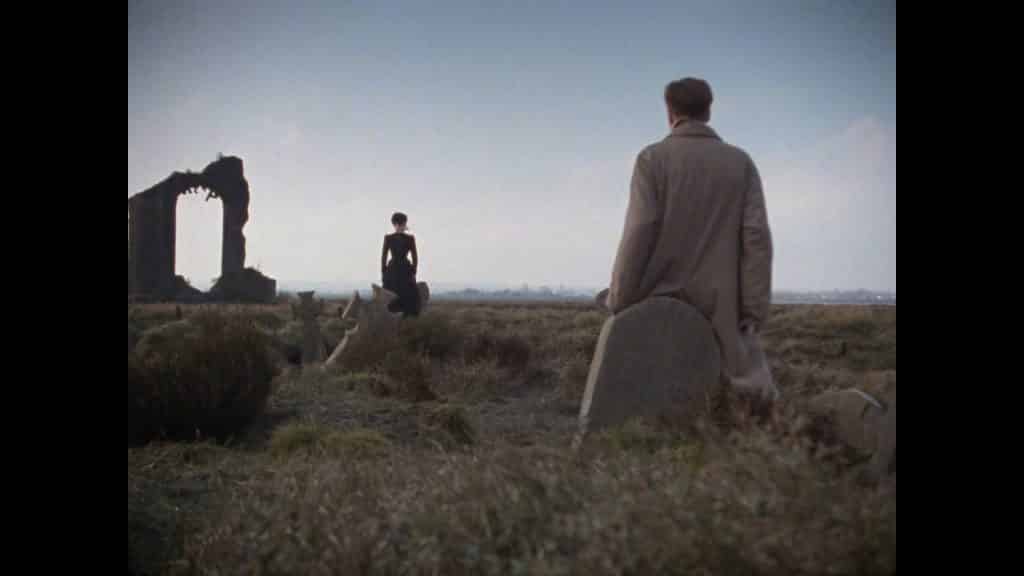
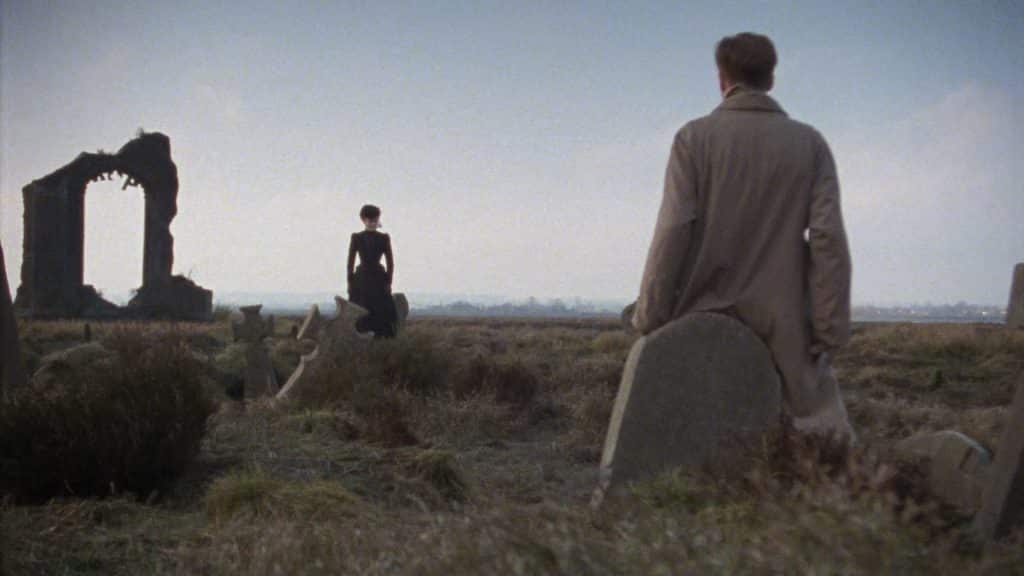
HOW DOES IT LOOK?: Network’s restoration is everything one could wish for. It really does justice to the camera work of Michael Davis, the shades of greyness and earthiness rendered brilliantly. It additionally offers the very welcome option of seeing The Woman In Black in its original, as-broadcast 4:3 aspect ratio or in a 16:9 configuration.
Purists will likely want the original 4:3 presentation, but the widescreen version has been thoughtfully formatted: Individual scenes, and indeed shots have been framed appropriately rather than a blanket approach being taken. It does, however accentuate the film grain somewhat, but it’s still a very immersive presentation and no mere gimmick.
(Note that the widescreen version may appear to be 35 seconds shorter, but it hasn’t been cut – it simply doesn’t include the commercial break bumpers.)
Some may be disappointed that there is no attempt at creating a surround mix of the audio track, but in an age when so many modern ghost stories seem encumbered by ham-fisted thumps and shrieks coming from all corners of the room, the original mono track presented here feels like a breath of fresh air. It leaves the audience to do some of the work, as any great ghost story should and also marks the end of an era – stereo television transmissions would arrive in the UK just a year or so later.
SHOULD I GET THIS?: If you’re the kind of anorak (like me) who likes having the original continuity announcements and TV ads for nostalgia’s sake, you’ll want to keep that well-worn and cherished VHS recording you’ve been holding onto since 1989. Everyone else, ditch it.
In either case, you’ll be wanting this release. It puts The Woman In Black in its long overdue place in the pantheon of truly great British horror films. Place your order.
The worldwide Blu-ray debut of The Woman in Black 1989 is available exclusively from the Network website from 10 August 2020.







